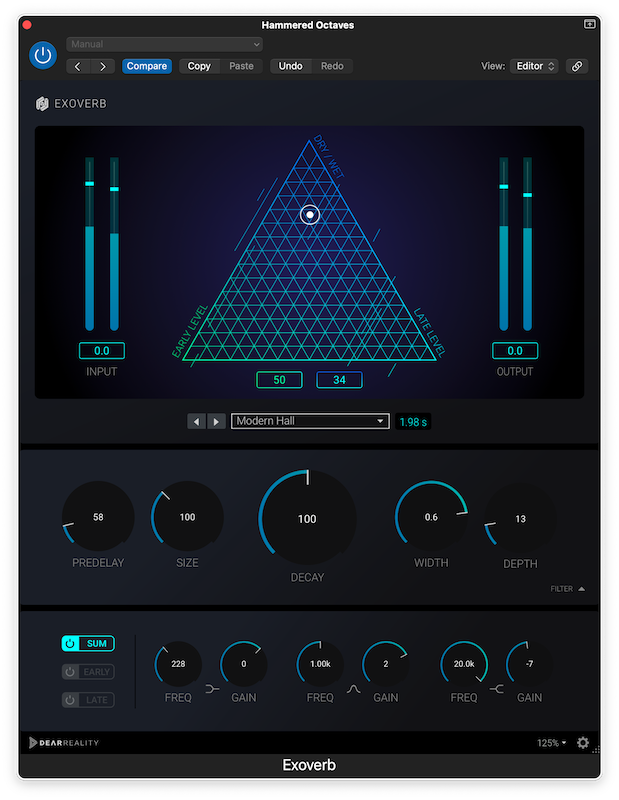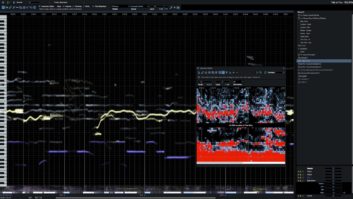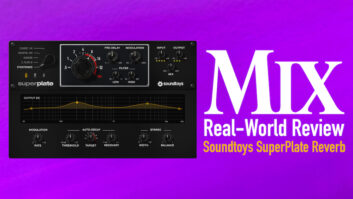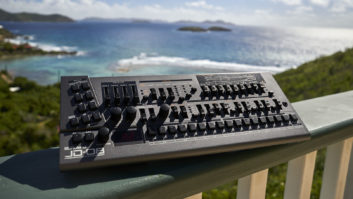
| MIX VERDICT: DEAR REALITY EXOVERB STEREO REVERB PLUG-IN |
| THE TAKEAWAY: “I’m impressed with Exoverb, and it’s now part of my collection of “go-to” reverbs for mixing.” |
| COMPANY: Dear Reality • www.dear-reality.com PRICE: $99 PROS: • The Triangle Pad allows for quick and simple experimentation on key aspects of the reverb sound. |
New York, NY (February 14, 2024)—Dear Reality has made its name by producing immersive audio software such as the spatializer Dear VR Pro and the room simulator Dear VR Monitor, among others. With Exoverb (Mac/Windows), the company brings its spatial technology to an affordable stereo reverb plug-in that includes innovative controls for standard reverb parameters.
Exoverb includes 50 impressive-sounding reverb types (referred to as “acoustic scenes”) distributed within four categories: Ambiences, Rooms, Halls and Plates. They were created with a hybrid reverb engine that mixes algorithmic operation with “synthesized spatial multi-IRs.” The various reverbs are available from a dropdown menu under the large pyramid-shaped grid controller called the Triangle Pad.
Like an X-Y pad, the Triangle Pad features a cursor that you drag to change values. Dragging vertically governs the wet/dry balance; dragging horizontally changes the balance of early and late reflections. More of the former enhances the transients. More of the latter smooths out the sound and emphasizes the tail.
On many reverbs, the early and late reflections are controlled by separate knobs, making it more tedious to try out different proportions.

The Triangle Pad allowed me to experiment with critical aspects of the reverb sound easily and quickly to find what I wanted.
To the left and right of the Triangle Pad are Input and Output meters, respectively. Both can be individually adjusted by dragging up or down in the numeric field under each meter or by selecting the field and typing in a specific value.
The Reverb Parameter section includes five knobs in the center of the interface. The Pre-Delay lets you add up to 500 ms before you hear the reverberation. Like so many reverbs, there’s no sync-to-tempo feature for the Pre-Delay, which is too bad because dialing in a rhythmic value can be helpful.
The Size knob determines the size of the selected space and allows you to vary it between 50 and 200 percent. The Decay parameter lengthens the late reflections.
The last two knobs in the Reverb Parameter section, Width and Depth, leverage Dear Reality’s experience in spatial audio. Turning up the former makes the reverberated signal stretch out wider, and it can be pretty dramatic. The Depth control is not as impactful; turning it up makes the source sound wetter, impacting its perceived depth. However, that’s not much different from simply changing the wet/dry balance. I had hopes that it would make the source move back more obviously in the soundstage than it does.
The lowest row of controls contains the EQ section, which includes knobs to control frequency and gain for Low Shelf, Bell and High Shelf filters. What makes it unusual is that you can create separate settings for the early and late reflections and the sum of the two. In addition, you can turn any of those three sections (Early, Late or Sum) on or off, giving you a lot of frequency control.
I’m impressed with Exoverb, and it’s now part of my collection of “go-to” reverbs for mixing. Some other plug-ins may have lusher-sounding tails, but they don’t have features like the Triangle Pad, the Width knob and the configurable EQ section, which make finding an appropriate setting easy and fast.
Dear Reality also offers a feature-reduced version called Exoverb Micro ($25), which has eight, rather than 50 different acoustic scenes, and a simplified interface with less adjustability.







